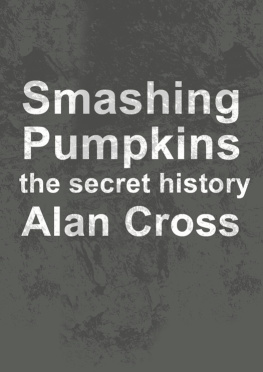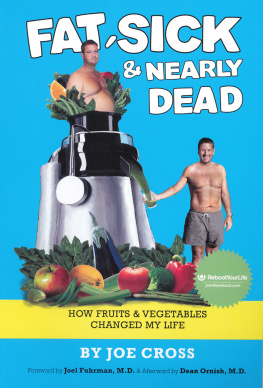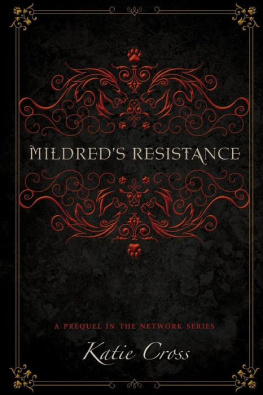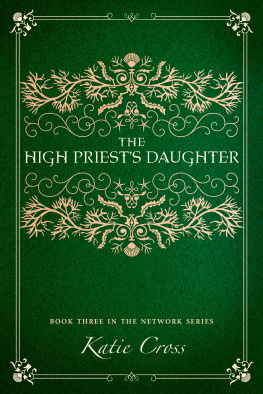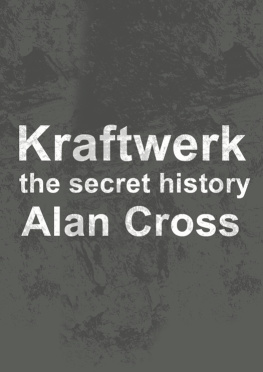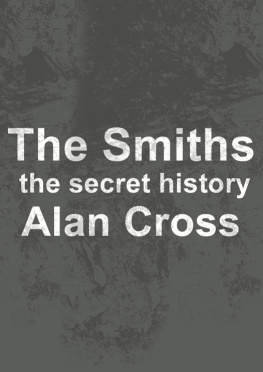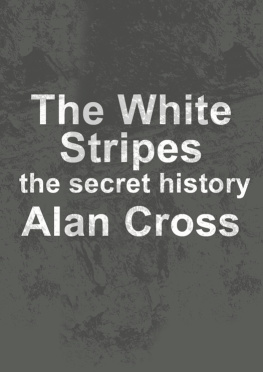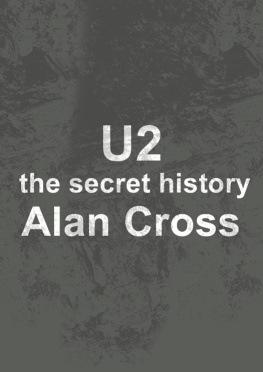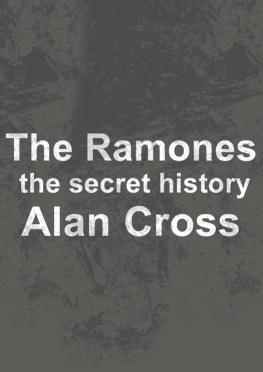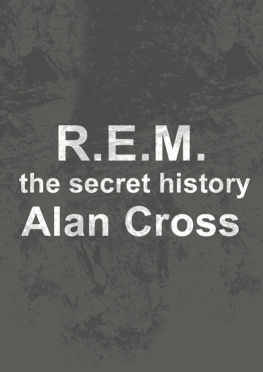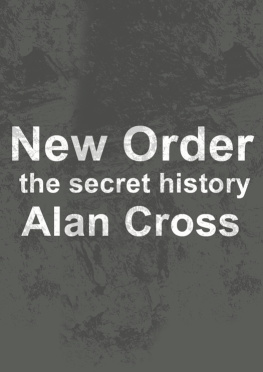Cross - Smashing pumpkins: the secret history
Here you can read online Cross - Smashing pumpkins: the secret history full text of the book (entire story) in english for free. Download pdf and epub, get meaning, cover and reviews about this ebook. year: 2011;2014, publisher: HarperCollins Canada;Audio Joe, genre: Non-fiction. Description of the work, (preface) as well as reviews are available. Best literature library LitArk.com created for fans of good reading and offers a wide selection of genres:
Romance novel
Science fiction
Adventure
Detective
Science
History
Home and family
Prose
Art
Politics
Computer
Non-fiction
Religion
Business
Children
Humor
Choose a favorite category and find really read worthwhile books. Enjoy immersion in the world of imagination, feel the emotions of the characters or learn something new for yourself, make an fascinating discovery.
- Book:Smashing pumpkins: the secret history
- Author:
- Publisher:HarperCollins Canada;Audio Joe
- Genre:
- Year:2011;2014
- Rating:3 / 5
- Favourites:Add to favourites
- Your mark:
- 60
- 1
- 2
- 3
- 4
- 5
Smashing pumpkins: the secret history: summary, description and annotation
We offer to read an annotation, description, summary or preface (depends on what the author of the book "Smashing pumpkins: the secret history" wrote himself). If you haven't found the necessary information about the book — write in the comments, we will try to find it.
Smashing pumpkins: the secret history — read online for free the complete book (whole text) full work
Below is the text of the book, divided by pages. System saving the place of the last page read, allows you to conveniently read the book "Smashing pumpkins: the secret history" online for free, without having to search again every time where you left off. Put a bookmark, and you can go to the page where you finished reading at any time.
Font size:
Interval:
Bookmark:
When Kurt Cobain died in 1994, panicked alt-rock fans rushed to crown a new voice of a generation. The list of potential successors was quickly whittled down to just two potential candidates. The first person on the list, Eddie Vedder, was disqualified almost immediately on the grounds that he appeared to be almost as unstable as Kurt. These people had a point; in 1994, Eddie was the odds-on favorite in the rock and roll death pool. Besides, while Pearl Jam had impeccable alt-rock credentials, their music and lyrical output were occasionally a little too, well, happy. The title was therefore handed to Chicago angst-meister Billy Corgan and his band, the Smashing Pumpkins.
Since then, Corgan and the Pumpkins have been top-of-mind whenever weve needed a fix of unhappy post-punk fuzz-rock. With a dynamic range as great as that of the Pixies and with a twin guitar attack thicker and more dense than Nirvana and Pearl Jam combined, the Pumpkins have consistently churned out material that veers from delicate ballads to crunching arena anthems. Behind it all is the not-so-benevolent dictatorship of Corgan, the maker and enforcer of all rules and policies within the band. But few will dare complain. Under his iron fist, the Pumpkins have sold tens of millions of albums by successfully articulating a generations rat-in-a-cage rage.
The Pumpkins beganand will ultimately endwith William Patrick Corgan. Born on March 17, 1967 (just 25 days after Kurt Cobain), his early home life was not exactly normal. Billy Sr. was a professional guitar player who often spent weeks on the road. He was once up for a gig with a band called the Amboy Dukes, but the job eventually went to a crazy guitarist from Detroit named Ted Nugent. Martha Corgan was a flight attendant who also found herself away from home more than she liked.
The rest of Billys childhood could best be described as confused. When his father and Penelope split up, Billy and Ricky stayed with Penelope, who eventually married a man named Anderson and soon bore him a son named Andrew. The whole time, Billy and Ricky lived within an hours drive of both their natural parents. The revolving cast of fathers and constantly shifting living arrangements took a serious psychic toll on Billy. His problems only intensified when Penelope insisted that he see a therapist about what she saw as a persecution complex. The therapist, a dear friend of Billys stepmother, took the view that Penelope wasnt the problem; it was Billy who was being irrational.
At first, Billy was content just to listen. He might have picked up a guitar earlier had Billy Sr. displayed any interest in giving him lessons. However, his father believed that Billy Jr. was the smart child; he was going to college to be a lawyer and not waste his life being an itinerant rock and roller. Billys introduction to the guitar had to wait until he was 14, when a friend showed off a new Gibson Flying V, just like the kind played by Michael Schenker of UFO, one of Billys favorite English metal bands. From that moment, Billy decided that hed rather play music than just listen to it. In an effort to learn more about the instrument, Billy expanded his collection to include albums by U2, Iggy Pop, David Bowie and R.E.M.
By the time he reached his 18th birthday, in 1985, Billy was living with his biological father and had become a fairly accomplished guitarist. When he graduated from Glenbard North High School in Coral Stream, Illinois, he formed Hexen, his first band. They rather quickly evolved into a group known as the Marked, a name inspired by the fact that both Billy and the drummer had rather prominent birthmarks. The Marked were into a gloomy, pseudo-goth, quasi-satanic, death-metal headspace. Since the Chicago market was saturated with similar groups in the mid-80s, the Marked moved to St. Petersburg, Florida, which, despite the large number of retirement homes, is also one of the death-metal capitals of the world. However, the Florida adventure soon turned into failure, and a dejected Billy found himself back in Chicago nine months later.
Shortly after he returned north, Billy met James Jonas Iha (born March 26, 1968), a graphic arts student at Loyola. Hitting it off, they talked about forming a group together and even worked on a couple of songs before Jamess duties with a group called Snake Train took precedence. Fortunately for Billy, Snake Train met with the same fate as the Marked a few months later, prompting James to give him a call. Pooling a few ideas, they came up with a few geeky, gloomy art-rock songs that were good enough to nab them some low-key shows in the Polish bars around the Chicago area. Their first live performancejust Billy, James and a drum machinetook place on July 9, 1988, opening for a band called StillLife at a bar called Chicago 21.
Things took a turn for the better when Billy and James decided to check out a band called the Dan Reed Network at the Avalon Ballroom, one of Chicagos better music venues. After the show, they were loudly critical of the performance, provoking a fight on the sidewalk with a fan of the band. Her name was DArcy Elizabeth Wretzky.
DArcy (born May 1, 1968) was a classically trained musician, proficient on both the oboe and violin. She had just returned from a foreign exchange in Europe, where she had been kicked out of the house by her sponsor family. When her plane landed at OHare, she was unable to reach her parents in South Haven, Michigan, to tell them that she was back in the country and needed a ride home. DArcys second call was to a friend in Chicago who offered to put her up for a while. She decided to stay in Chicago and found work in a bakery.
Backed by that temperamental drum machine, the Pumpkins recorded a quick demo to use as a calling card at clubs around town. Appropriately enough, the first bar to give them a shot was the aforementioned Avalon, where the Pumpkins appeared in front of 50 people on August 10, 1988. Cover charge for the night was $1.
In the crowd that night was Joe Shanahan, owner of the Cabaret Metro, Chicagos biggest and most prestigious music club. Although he acknowledged that the bands playing was a little rough, he saw potential in their approach and offered them an opening slot for Janes Addictionif they promised to ditch the drum machine and hire a real, live timekeeper. Shanahan recommended that they contact a guy from Joliet named Jimmy Chamberlain.
At first, the fit with Jimmy (born June 10, 1964) seemed awkward. He was a big-band drummer by training and had been earning a decent living, first with Eddie Karosas Polka Party and then with JP and the Cats, a 10-piece outfit that played Tommy Dorsey and Benny Goodman in Holiday Inn lounges from Cleveland to Las Vegas. Jimmy wasnt much of a rocker; he believed the most radical band in the world was Squeeze. He also wasnt crazy about the Pumpkins lack of virtuosity. As a big-band player in the style of Gene Krupa and Louie Bellson, Jimmy was quick to admire talent and equally quick to sneer at amateurs. About the only thing he did like about the Pumpkins were Billys musical ideas, especially his sense of phrasing and dynamicsessential elements of classic big-band songs. Another attraction was Billys determination to make his band huge. After thinking it over for a while, Jimmy opted out of JP and the Cats and joined the Pumpkins in time for their third-ever show, October 5, 1988, at the Cabaret Metro, and a second gig at the Avalon on October 29. The band had taken flight.
One tape fell into the hands of the owner of a small Chicago label called Limited Potential, which released 1,000 seven-inch copies of I Am One (backed with Not Worth Asking) in May 1990. This single attracted the attention of another small label, Sub Pop, which agreed to release the bands next recording. Tristessa (b/w La Dolly Vita and produced by Butch Vig) appeared on colored vinyl in December in a run of 7,500 copies.
Font size:
Interval:
Bookmark:
Similar books «Smashing pumpkins: the secret history»
Look at similar books to Smashing pumpkins: the secret history. We have selected literature similar in name and meaning in the hope of providing readers with more options to find new, interesting, not yet read works.
Discussion, reviews of the book Smashing pumpkins: the secret history and just readers' own opinions. Leave your comments, write what you think about the work, its meaning or the main characters. Specify what exactly you liked and what you didn't like, and why you think so.

